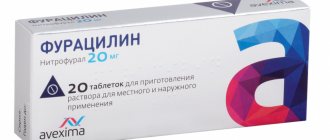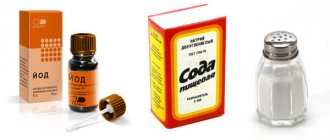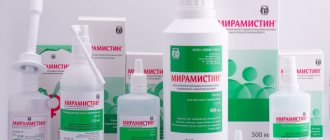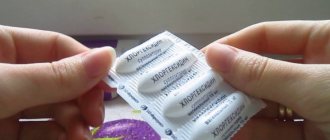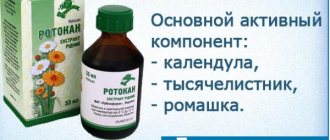One of the most effective methods of treatment for various diseases of the throat and oral cavity is gargling with hydrogen peroxide. Hydrogen peroxide is a clear liquid that more closely resembles water. But in concentrated form it is dangerous for the mucous membranes, so for rinsing it must be diluted.
Oxygen can affect not only bacterial cells, but also the epithelium. Therefore, it is necessary to rinse with the product as carefully as possible.
The action of peroxide is based on the oxidative process carried out by active oxygen. The process affects DNA cells and lipids. As a result, with weak oxidation, the cell is able to recover, and with intense oxidation, it dies.
Using the solution for various diseases
There are a number of diseases for which gargling and rinsing is considered the most effective:
- angina;
- pharyngitis;
- laryngitis;
- stomatitis;
- periodontal disease.
For each disease, it is necessary to select the proportions and duration of treatment.
Tonsillitis and its acute form - sore throat, including purulent one. Sore throat is an infectious disease associated with the inflammatory process in the mucous membrane of the tonsils. Harmful bacteria not only kill normal microflora, but also penetrate into the tissues of the body.
To treat a sore throat, it is recommended to gargle with a solution prepared according to the following recipe:
- in a glass of water you need to dissolve a teaspoon of 3% peroxide;
- You need to pour boiled water into another container;
- First, the solution is treated, and then the throat is rinsed with clean water to remove any remaining medication.
A hot solution sometimes provokes inflammatory processes, and a cold solution is often a factor in the onset of complications. Therefore, gargle only with warm liquid. To obtain the effect, it is necessary to observe the proportions of the solution, since the healing process may be delayed.
Pharyngitis is a disease characterized by inflammation of the pharyngeal mucosa. A hydrogen peroxide solution for gargling can alleviate symptoms.
For pharyngitis, rinsing with liquid has several purposes:
- washing out viruses and bacteria;
- flushing pathogenic mucus from the nasopharynx;
- antiseptic effect on the lesion;
- increasing local immunity;
- acceleration of tissue generation in various forms of the disease.
In case of illness, the procedure should be performed hourly at the beginning of treatment, a little later the number of procedures is reduced to 5 times a day. For chronic pharyngitis, you should gargle twice a day. This frequency is used as a preventive measure.
Gargling Safely with Hydrogen Peroxide
A chemical compound consists of two molecules of hydrogen and one of oxygen. Depending on the area of application, it is dissolved in water to obtain the required concentration:
- A 90% solution is used in industrial production - for example, for bleaching fabrics.
- 35% - in the production of food products, for disinfection of their packaging.
- 6-10% – for hair bleaching.
As a rule, the pharmacy offers a 3% solution. The product is a clear, colorless, odorless liquid.
Its cleansing and disinfecting properties are used to whiten teeth, heal gums, eliminate inflammation of mucous membranes, skin, and gynecological diseases.
Gargling with peroxide relieves pain. This method of treatment is beneficial for preventive purposes, as well as for colds, sore throat, tonsillitis, and flu.
It is important not to exceed 3% concentration to avoid irritation and not to dry out the mucous membrane. Do not swallow peroxide while rinsing.
Treatment of laryngitis
Laryngitis - in some cases of illness, rinsing with peroxide often has a complex effect:
- relieving sore throat;
- eliminating dry throat;
- improving the patient's well-being.
You need to gargle with peroxide 2-3 times a day for a week.
Stomatitis - the effect of peroxide on the affected areas has the following effects:
- antibacterial cleansing;
- elimination of itching and soreness;
- reduction of swelling.
The course of treatment is two weeks, twice a day.
Periodontal disease is associated with the appearance of ulcers in the mouth. A solution of hydrogen peroxide promotes the healing of formed mucosal defects.
Positive properties of the composition
Hydrogen peroxide is an active substance, H2O2, which, after application to the skin, mucous membranes, enamel, and also when interacting with blood and saliva, begins to foam strongly, produces oxygen molecules and has an oxidizing effect. It penetrates deep into tissues and various pathological foci, effectively removes contaminants from there and thereby reduces the number of harmful bacteria.
Softens tissues, promotes easier and faster separation of dead cells, removal of pus from wounds, cleansing, and has an antioxidant, anti-inflammatory and even hemostatic effect. It is also believed that peroxide strengthens sore gums and helps stop bleeding from small capillaries
Important ! Peroxide suppresses the activity of gram-positive bacteria well, but it does not fight other pathogens (fungi, gram-negative bacteria, viruses, anaerobes), which is what other products successfully do - Chlorhexidine, Miramistin.
Due to its oxidizing ability and the ability to release active oxygen, it removes not only impurities, but also destroys color pigment, due to which it is actively used in aesthetic dentistry for enamel whitening procedures. True, dentists use formulations with a high concentration of peroxide - from 15%. If we talk about the hydrogen peroxide solution, which can be found in pharmacies and used at home, then it has a low concentration of the active substance - 3%. And this, of course, will not allow achieving a significant change in the tone of the enamel. But it will be useful in other cases, and it is quite inexpensive, which is an undeniable advantage.
Some also find that gargling with hydrogen peroxide has a soothing effect if you have a toothache or sore throat. But this is not entirely true. The product reduces the number of bacteria and pathogens, but for a short period of time, but it cannot relieve pain.
Recommendations on how to gargle correctly.
Before you start gargling, you need to prepare your throat. To do this, you will need a solution of boric acid, prepared in the ratio: a teaspoon per glass of warm water. Then you need to prepare a peroxide solution. To do this, you need to dissolve a tablespoon of the substance in ½ glass of warm boiled water.
After completing the procedure, the inflamed area should be rinsed with another liquid:
- ordinary boiled and heated water;
- soda solution;
- chamomile decoction;
- sage decoction;
- potassium permanganate solution.
Indications for completion of therapy
Typically, the course of additional treatment ends only after improvements are noticeable:
- purulent discharge disappears;
- the mucosal epithelium is restored;
- sore throat is eliminated.
Carrying out the gargling procedure in compliance with the basic rules means getting the maximum effect.
Basic recommendations for gargling with hydrogen peroxide:
- A 0.25% hydrogen peroxide solution is suitable for rinsing.
- The optimal temperature for the procedure is 50–60 degrees.
- You can eat food after rinsing only 30 minutes later.
- The best option for complex treatment is the use of rinses as additional therapy.
When treating with peroxide solution, it is necessary to take into account possible side effects and obvious contraindications to the use of the substance.
Hydrogen peroxide is an affordable aid for oral hygiene.
Hydrogen peroxide is an excellent antiseptic that is often used to treat small wounds.
Due to its versatility and availability, peroxide can be found in almost every home medicine cabinet. Peroxide contains molecules of oxygen - O and hydrogen - H, which determines its oxidizing properties, which allow it to cope with a large number of bacteria. This inexpensive remedy helps protect teeth and gums, as well as prevent the development of colds.
The most common concentration of hydrogen peroxide available in pharmacies is a 3% solution. Higher concentrations are typical for industrial production.
Due to its antibacterial properties, hydrogen peroxide helps in treating gum disease.
Plaque that forms on teeth forms a strong protective film of bacteria called biofilm. Hydrogen peroxide, due to its oxygen content, helps to destroy this defense and destroy plaque.
Recent studies conducted in 2022 have shown the benefits of using hydrogen peroxide as an adjunct non-surgical treatment for periodontitis. Studies have been conducted in which it was proposed, in addition to the standard treatment of periodontitis, to use a peroxide-based drug to treat gums. The results showed that by the end of the study, the hydrogen peroxide group had significantly fewer signs of gum disease, compared to the group that received only the standard treatment.
Hydrogen peroxide keeps teeth white.
In fact, many types of toothpaste and mouthwash already contain this compound.
Unusual studies conducted on bovine teeth stained with tea showed that over time, a liquid containing hydrogen peroxide significantly increased the whiteness of the teeth. Of course, when comparing the speed and depth of whitening, special products show significantly better results, but they, in turn, require a careful approach and control by the dentist to avoid damage to the enamel.
Whitening rinses are contraindicated in cases of thinning enamel and severe tooth damage. Relief of sore throat.
One of the causes of throat diseases is bacterial infections. Gargling with a hydrogen peroxide solution can relieve discomfort by reducing the amount of bacteria in the mouth and helping to quell infection. As already written above, the oxygen contained in the peroxide changes the environment of anaerobic bacteria and prevents their growth.
Hydrogen peroxide combats bad breath.
When rinsing with this solution, foam with a large number of bubbles filled with oxygen is formed. This allows you to effectively clean the most difficult to reach places in the oral cavity, removing dead cells and significantly reducing the number of bacteria. Rinsing ensures the death of microbes that cause an unpleasant odor.
How to use hydrogen peroxide to rinse your mouth and throat. It is important to know how to use hydrogen peroxide solution correctly to get maximum benefits and avoid unwanted side effects.
To gargle with hydrogen peroxide, you must first dilute it with water following the included instructions. As a rule, a 3% solution of hydrogen peroxide is diluted with water in a ratio of 1:11, or according to the doctor's instructions. If you add a few drops of essential oil, such as peppermint, to the resulting solution, this will significantly improve the taste of the rinse.
There is no need to make a more concentrated solution for rinsing, as this can lead to burns of the mucous membrane. Also, to avoid possible gum irritation, limit rinsing to a few times a week.
Avoid swallowing hydrogen peroxide. Although ingesting small amounts of the 3% concentration does not usually cause serious problems, it may cause stomach upset and vomiting.
Children should not gargle with hydrogen peroxide solution if they are likely to swallow it. Adults should always supervise the child's rinsing process.
If irritation develops after gargling and does not go away after a few hours, stop using hydrogen peroxide.
In rare cases, more serious individual side effects may occur.
In any case, if a person prone to allergic reactions needs to consult with his doctor about the use of rinses with hydrogen peroxide.
When visiting a dentist, be sure to inform him that you are using home rinses with a peroxide solution in order to receive recommendations and an assessment of the effectiveness of the rinses from a specialist.
Contraindications and side effects
Rinsing with peroxide is not recommended for pregnant women, children and people with individual intolerance to the substance. Therefore, you need to take into account the recommendations of doctors:
- When used by pregnant and lactating women, care must be taken to ensure that the solution does not enter the stomach.
- It is important to dilute the substance with water in accordance with the proportions.
- The frequency of rinsing should be agreed with your doctor.
- Treatment of children with this remedy is undesirable, as they may swallow liquid that is dangerous to the stomach.
If the dosage is incorrectly selected, pain and heaviness sometimes occur in the gastrointestinal tract. To eliminate symptoms, you need to reduce the number of drops for preparing the product and take a break in treatment for five days.
The use of hydrogen peroxide is not only effective, but also convenient. If necessary, the solution can be easily placed in a bottle and taken with you on the road.


